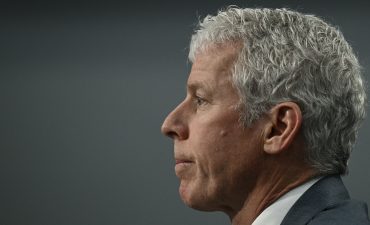
- Brent Crude
- Energy Policy
- Global Energy Market
America’s Energy Arsenal: Rebuilding the Strategic Reserve
6 minute read

After years of depletion, Washington moves to rebuild the Strategic Petroleum Reserve—reviving a Cold War-era safeguard in an age of fiscal constraint and geopolitical volatility.
In the calculus of energy security, timing is everything. On October 16, with West Texas Intermediate crude trading near $60 per barrel—its lowest sustained level in more than two years—the U.S. Department of Energy issued a solicitation for one million barrels of oil destined for the Strategic Petroleum Reserve. The purchase, though constituting barely a quarter of one percent of the facility’s storage capacity, marks the Trump administration’s inaugural effort to reverse a decade-long erosion of America’s energy insurance policy.
The gesture carries symbolic weight. During the 2024 campaign, then-candidate Trump lambasted his predecessor’s historic 180-million-barrel emergency release following conflict in Ukraine, pledging to restore what he characterized as a recklessly depleted national security asset. Yet the million-barrel solicitation—funded by a $171 million appropriation tucked into the Working Families Tax Cut Act—illuminates a starker reality: the chasm between restoration rhetoric and fiscal capacity. At current inventory levels of 408 million barrels, the SPR sits at 57 percent of its 714-million-barrel capacity. Full replenishment would demand acquiring some 300 million barrels at a potential cost exceeding $18 billion, a figure that dwarfs available appropriations and underscores the reserve’s vulnerability to competing budgetary pressures.
The Anatomy of Depletion
The SPR’s recent history reads as a chronicle of legislated attrition punctuated by crisis response. Created in 1975 as Congress’s answer to the Arab oil embargo, the reserve achieved its apex in 2009 at 727 million barrels. Since then, lawmakers have treated it less as sacrosanct emergency stockpile than as budgetary piggy bank. Beginning with the Bipartisan Budget Act of 2015, eight separate laws mandated the sale of 358.6 million barrels between fiscal years 2017 and 2031, primarily to offset deficit spending. By October 2022, these congressionally directed sales—combined with the emergency Ukraine-related release—had reduced inventory to 405 million barrels, the lowest mark since the facility’s inception.
The 2022 drawdown, while politically contentious, achieved its immediate objective. The release of 180 million barrels between March and October helped moderate gasoline prices that had surged past $5 per gallon nationally, generating $17 billion in revenue for the SPR Petroleum Account while easing pressure on American households. Yet that intervention extracted a steep toll on strategic depth. Energy Secretary Christopher Wright, appointed in early 2025, has characterized the decision as shortsighted opportunism that sacrificed long-term security for short-term political relief—a framing that conveniently elides the role of congressional Republicans in mandating previous sales.
Congress has partially reversed course. The Consolidated Appropriations Act of 2023 canceled 140 million barrels worth of future sales, while this year’s One Big Beautiful Bill Act repealed the fiscal 2026 drawdown mandate entirely. These legislative corrections signal recognition that the SPR’s buffer had worn dangerously thin. But canceling planned depletion differs fundamentally from funding active restoration, and therein lies the administration’s dilemma.
Market Forces and Fiscal Constraints
The timing of this initial purchase reflects shrewd market opportunism. WTI crude has retreated 24 percent from its January 2025 peak of $79.28 per barrel, driven by robust U.S. production averaging 13.6 million barrels daily and faltering compliance among OPEC+ members. Surging output from Brazil and Guyana has further glutted global inventories, creating a buyer’s market that amplifies federal purchasing power. At prevailing spot rates, the $171 million allocation could theoretically secure up to 2.85 million barrels, though delivery logistics and contractual specifications will likely compress that yield.
The solicitation’s spot-indexed structure exploits these favorable conditions through a mechanism that locks in current lows while hedging against volatility. Bids are due October 28, with deliveries scheduled for December 2025 and January 2026 at the Bryan Mound facility in Texas. This design capitalizes on the contango in futures markets—where near-term contracts trade at discounts to longer-dated ones—incentivizing prompt delivery and minimizing taxpayer exposure to price spikes.
Yet Secretary Wright’s public request for $20 billion in dedicated refill funding reveals the inadequacy of current appropriations. Fiscal 2025 allocations for the SPR Petroleum Account totaled just $295 million, earmarked primarily for operations and deferred maintenance rather than aggressive acquisition. At this pace, full restoration would require decades absent supplemental Congressional action—a prospect dimmed by intensifying fiscal conservatism and competing demands from defense modernization to infrastructure renewal.

Strategic Implications in an Age of Abundance
The reserve’s diminished state poses particular irony given America’s transformed energy landscape. The shale revolution has converted the United States from the world’s largest oil importer to a marginal net exporter, with the Permian Basin alone accounting for 47 percent of national production. In this context, skeptics question whether a 1970s-era import insurance scheme retains relevance, suggesting resources might better flow toward renewable energy infrastructure or electric grid hardening.
Such arguments, while superficially compelling, misread the SPR’s contemporary function. In an interconnected global market, domestic abundance provides no immunity from international price shocks. The reserve serves multiple overlapping purposes: deterring adversaries from weaponizing energy supplies, fulfilling International Energy Agency obligations for emergency stockholding, providing leverage in diplomatic negotiations, and dampening volatility that cascades through transportation costs and manufacturing inputs.
These functions extend into sectors only tangentially connected to petroleum. Data centers powering artificial intelligence workloads consume electricity at industrial scale, rendering them vulnerable to supply disruptions from extreme weather or cyber attacks. A robust SPR mitigates cascade failures that could darken server farms from Virginia to Oregon. Similarly, electric vehicle manufacturing—now a $400 billion annual domestic industry—depends on petrochemical feedstocks for battery components and plastics. Stable crude pricing smooths ethylene and propylene costs, protecting margins for manufacturers navigating the transition to electrified transportation.
The Department of Energy’s embrace of digital procurement tools hints at modernization beyond mere barrel acquisition. Advanced analytics could optimize cavern utilization at the four Gulf Coast storage sites, where seismic monitoring and brine displacement modeling promise to extend asset longevity. Congress’s fiscal 2026 budget request allocates $1.4 billion for a new management contract emphasizing efficiency gains through predictive modeling and blockchain-tracked crude provenance—a recognition that the reserve must evolve from passive storage to actively managed strategic instrument.
The Path Forward
Logistical realities temper even modest refill ambitions. Cavern integrity tests at the West Hackberry and Big Hill sites demand an estimated $500 million in near-term investment, potentially diverting resources from oil purchases. Maintenance backlogs accumulated during years of neglect have already forced delays in planned acquisitions, fragmenting what should ideally proceed as steady, sustained replenishment.
Without dedicated funding mechanisms—whether through energy security bonds, defense budget reallocations, or earmarked royalties from federal mineral leases—restoration will unfold in episodic bursts vulnerable to partisan gridlock. The Congressional Research Service projects that absent intervention, inventory could slide to 335 million barrels by 2031, necessitating acquisition of 379 million barrels thereafter merely to maintain current inadequate levels.
The million-barrel solicitation closing next week thus represents less an inflection point than a proof of concept, testing procurement machinery after years of disuse while honoring a presidential campaign commitment. For energy markets, it signals policy continuity favoring fossil fuel development over accelerated transition. For policymakers, it poses uncomfortable questions about resource allocation in an era of constrained budgets and multiplying threats.
The SPR’s original architects envisioned a fortress against OPEC’s grip—a vision partially realized and then paradoxically undermined by American abundance. Today’s challenge differs: maintaining strategic depth not against yesterday’s embargoes but tomorrow’s unpredictable disruptions, from Middle East conflagrations to hurricane strikes on Gulf Coast infrastructure. Whether a 50-year-old facility designed for a different energy epoch can adapt to serve these evolving needs remains uncertain.
What seems clear is that one million barrels, while better than nothing, falls laughably short of adequacy. The reserve was built as a buffer against the unforeseeable. Its restoration—or abandonment—will test whether American political institutions retain capacity for long-term thinking in an age addicted to immediate gratification. As bids arrive at the Department of Energy next week, they will quantify not just the price of oil, but the value a republic places on preparation itself.







